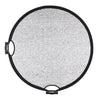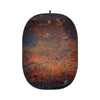10 Mistakes Amateur Photographers Tend to Make
Not everyone with a camera can call themselves a photographer. What makes a photograph look crisp and professional? Good photography relies heavily on skill and picking the right subjects. This skill isn’t difficult to improve—with enough practice and research, you can avoid these 10 photography mistakes and see a big difference!
1 - Bad photo composition
Proper photo composition is important for getting a good shot. A slice-of-life or random tourist shot will always be surrounded by an amateur’s vibes. Taking the time to compose a shot is important. Come up with a concept shot and look up some composition tips for photography if you’re unsure on how to plan it out. This can make your shots look much more artistic instead of randomly taken.

2 - Unappealing lighting
Lighting separates good photography from bad. It can make or break your photograph’s desired message. Amateurs often take pictures without considering the lighting and how it affects their subject’s contours, textures, and the overall mood of the picture.
Harsh, bright lighting is terrible for photography. Try to take pictures in diffused and soft lighting, maybe play around with some colour lighting setups to add more drama. Try to use reflectors to soften up the lighting before you start clicking away.
3 - Blurry photos
Blurry photos are an amateur photographer’s calling card and can be caused due to a variety of different mistakes. Perhaps you aren’t holding your camera steadily enough to get a clear shot—try opting for camera stands and tripods if you have shaky hands to avoid getting blurry pictures. Taking time for a good shot always pays off!
Another possible reason for getting blurry pictures is that the ISO might not be lowered to a reasonable level. Higher ISO increases the grain or noise, capturing softer images with a lack of details and contrast. If nothing else works out, try polishing your camera lens.
4 - Unreasonable distance
White space works amazingly with certain shots; however, you need to have some level of closeness to your photography subject. Creating a focal point is essential for getting crisp, eye-catching photos, which is difficult to do if you’re too far away and your subject is blending into the background.
Get physically closer to whatever you’re trying to photograph or zoom in. You can also consider macro photography; just ensure that you’ve taken the right steps to compose your photograph to work with your goals.

5 - Overexposed shot
Underexposed and overexposed photographs should reside only in our Myspace memories. Instead of looking cool, these photos obscure key details that can make or break a photograph. Lower your camera’s contrast and fix the exposure levels to look natural to avoid making your subject appear washed out.
6 - No subject
Taking a poorly composed photograph is a common amateur mistake. However, certain newbies who want to show off their artistic muscles without appropriate knowledge skills tend to take photographs without a subject at all.
Choose a subject and focus on composing the rest of your picture around that! The subject needs to stand out in some sort of way—by colour, contrast, motion, focus, or light. Rare cases can flourish with having no subject through the use of proper contextual information that allows viewers to rely on their own creativity to infer how the scene would feel complete.
7 - Lack of coaching
If the subject of your photograph is a person, your pictures might not turn out to be the best without you actually making a mistake. Your model might pull unflattering expressions, or slouch over, or generally be bad at posing.
Don’t shy away from coaching your subject about how to pose or adjust their angles to get a better picture. If you’re working with models who don’t follow your advice, hire ones who pay better attention to their posing to get the best results.

8 - No editing
We all love the idea of the perfect shot with zero editing and clean-ups, but it’s extremely rare to get the perfect picture from the get-go. It’s rather common to touch your pictures up with Photoshop or other software for editing photos, so it’s important to keep up with the trends if you want your photographs to stand out positively.
Learn some basic Photoshop skills or simply brand yourself as a natural photographer making an artistic statement.
9 - Working with just one lens
The basic lens for a DSLR is a wonderful addition to your photography arsenal, however, there are so many different lenses out there! Each one of them is made for a different purpose, with some working much better than others depending on their usage.
You miss out on multiple dimensions if you only ever rely on a single lens for all of your photographs—try out a wide-angle lens, fisheye lens, or macro lens!
10 - Not learning the technicalities
If you’re constantly facing technical errors—camera shake, focus, exposure, white balance, and more—it’s because you’re putting too much faith in the camera itself. The camera doesn’t know what its photographer intends to do with each picture. Learn how to take control of the settings to create the image that’s in your mind early on in the photography process in order to avoid any degradation of image quality.

Get the best equipment to live out your photography dreams!
Becoming a professional photographer means stocking up on quality equipment. EssentialPhoto offers a wide range of photography products, equipment, tools, and accessories that can make your amateur photography look like an expert’s! From tailored lighting kits that include a collapsible background to make it perfect for video blogging and interviews, to tables and tents, stands, videography accessories, and other similar products, we’ve got it all!
Get in touch with us to find out more about our products.






































































































































































































































































